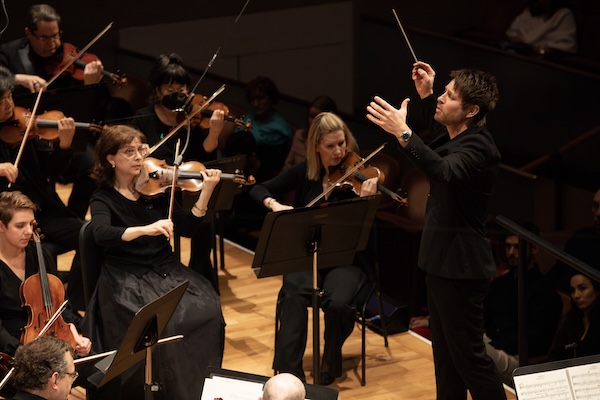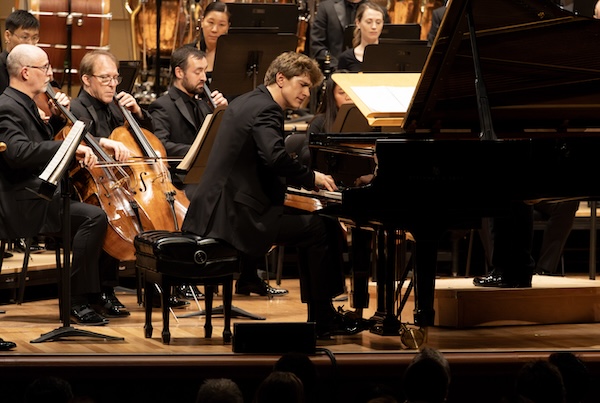A Dynamic Duo teams with DSO in Chopin and Shostakovich

Krzysztof Urbański led the Dallas Symphony Orchestra Thursday night in a program featuring two established favorites, Chopin’s Piano Concerto No. 1, featuring soloist Jan Liseicki, and the Symphony No. 10, Op. 93, by Dmitri Shostakovich.
Urbański and Lisiecki are both established artists with reputations that belie their relative youth. They are also familiar colleagues, having collaborated on Lisiecki’s 2017 album of works by Chopin for piano and orchestra released by Deutsche Grammophon.
Both men cut striking figures on the Meyerson’s platform, complementing one another in coal-grey attire representing the latest semi-formal fashions that are becoming more common on concert stages. That said, anyone who might have held concerns that their approach to the music might be casual or devil-may-care was quickly relieved of that notion.
The Chopin concerto led off the evening, with Urbański deftly leading the orchestra through the exposition. Once Lisiecki entered, he and Urbański seemed locked in synchronization with frequent eye contact.
Throughout the concerto, Lisiecki executed everything from lyrical arabesques to dazzling arpeggios with ease and smoothness. The orchestra under Urbański was right with him, landing phrases and cadences with a precision that matched Lisiecki’s authority.

The Romanze was the highlight of the concerto, featuring tempo shifts and steadily building expression. The successive themes of the Rondo-Vivace were marked by brisk krakowiak dance rhythms and sparkling articulation by Lisiecki.
Shostakovich’s Tenth Symphony brought a distinct change of mood from the spirited concerto. Programmatic and biographical subtexts frequently accompany symphonies of Shostakovich and the Tenth is no exception, including the composer’s oft-used cipher of his stalk motto, DSCH. Solomon Volkov’s Testimony alleges that the second movement of the work is a musical portrait of Stalin.
Capturing the overall pessimism of the work seemed to be Urbański’s principal goal as he coaxed those extreme dynamics and tuttis from the orchestra. The generally slow tempo of the opening Moderato indicates a tragedy comparable to that heard in the composer’s Fifth Symphony. The rapid tempo of the Scherzo adds a manic quality to that movement rather than an element of humor like that of the Fifth. The Allegretto and Andante each add instances of grotesque irony and pathos that further round out the mix of feelings in the symphony.
Under Urbański, the orchestra conveyed these sentiments with an exacting degree of intensity. Urbański achieved his results with a measure of calmness that contrasts with some of the highly theatrical mannerisms employed by noted conductors of the past. The results spoke for themselves, both sonically and in the listeners’ response; both selections elicited standing ovations from the audience
The program will be repeated 7:30 p.m. Friday and 3 p.m. Sunday. dallassymphony.org


